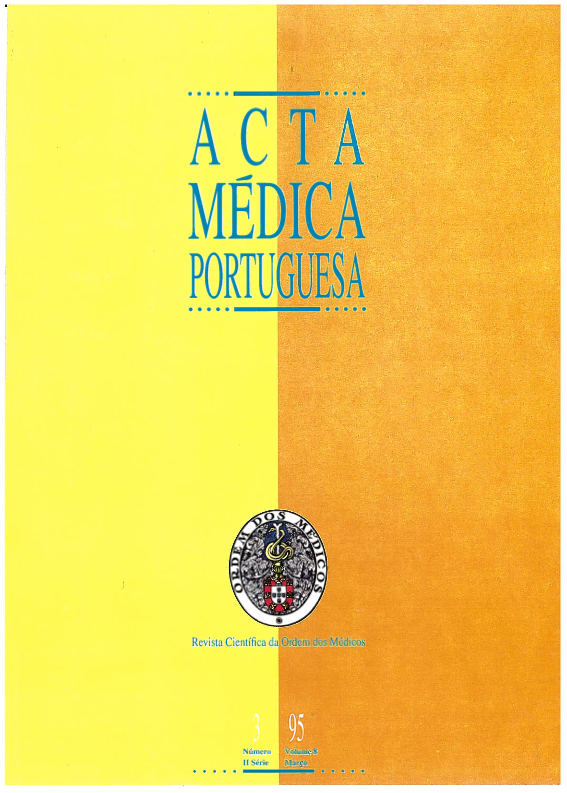Influência da toxicidade combinada no desenvolvimento da lesão pancreática alcoólica. Ensaio experimental prolongado.
DOI:
https://doi.org/10.20344/amp.2683Resumo
The aim of this study was to evaluate the adverse effects on the exocrine pancreas of ethanol and ethanol with congeners which coexist in alcoholic beverages most commonly consumed by the Portuguese population. Eighteen male Wistar rats were divided into three groups and submitted to a daily intraperitoneal injection of a hydroalcoholic solution of ethanol (SHAE) and a hydroalcoholic solution of ethanol, acetaldehyde, methanol and higher alcohols (SHAF); the third group served as a control and received an equivalent volume of an isocaloric solution of dextrose. All the animals were sacrificed at the end of the 9th week of the experiment. The following histological lesions were considered: acinar cell necrosis and steatosis, ductal dilatation, intraluminal plugs, parenchymal inflammation, fibrosis, peripancreatic fat necrosis and inflammation. Their severity was graded by means of a scoring system. The histopathologic changes which characterize pancreatitis (acinar cell necrosis, parenchymal inflammation, fibrosis and peripancreatic fat necrosis and inflammation) were found in the majority of animals of both study groups, but in none of the control group. The lesions tend to be more frequent and severe in the group treated with ethanol and its congeners (SHAF) than in the SHAE group; these differences are statistically significant when necrosis, ductal dilatation and overall severity of lesions are considered. The results of this study suggest that in the pancreas the toxicity of ethanol is enhanced by interaction with other components of alcoholic beverages.Downloads
Downloads
Como Citar
Edição
Secção
Licença
Todos os artigos publicados na AMP são de acesso aberto e cumprem os requisitos das agências de financiamento ou instituições académicas. Relativamente à utilização por terceiros a AMP rege-se pelos termos da licença Creative Commons ‘Atribuição – Uso Não-Comercial – (CC-BY-NC)’.
É da responsabilidade do autor obter permissão para reproduzir figuras, tabelas, etc., de outras publicações. Após a aceitação de um artigo, os autores serão convidados a preencher uma “Declaração de Responsabilidade Autoral e Partilha de Direitos de Autor “(http://www.actamedicaportuguesa.com/info/AMP-NormasPublicacao.pdf) e a “Declaração de Potenciais Conflitos de Interesse” (http://www.icmje.org/conflicts-of-interest) do ICMJE. Será enviado um e-mail ao autor correspondente, confirmando a receção do manuscrito.
Após a publicação, os autores ficam autorizados a disponibilizar os seus artigos em repositórios das suas instituições de origem, desde que mencionem sempre onde foram publicados e de acordo com a licença Creative Commons









